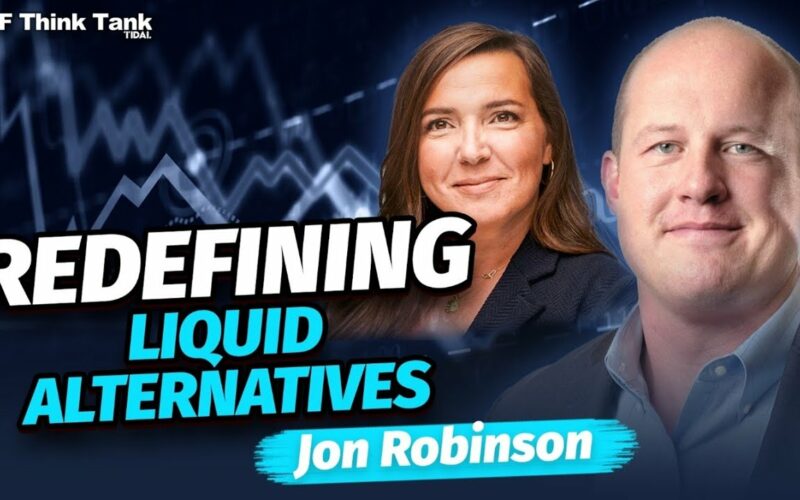In the 30 years since ETFs first came to market, we’ve often observed an interesting phenomenon known as the first mover advantage. But in the spot bitcoin ETF race, we are unlikely to have a first mover. That’s why we’re suddenly obsessing about ETF marketing tactics.
When a new ETF is the first to capture a new idea, a theme, a factor, or a strategy type, that ETF often finds itself crowned a new category leader as assets tend to follow the pioneers. Many clone ETFs may join the party, but first movers often find assets to be sticky and category leadership to be lasting.
First mover is a coveted position for product providers. But in the heated, decade-long race for a spot bitcoin ETF, it’s unlikely that the SEC approves one spot bitcoin ETF at a time. Most market participants expect some version of a blanket approval to take place in January, meaning most – if not all – proposed spot bitcoin ETFs could be coming to market at once.
We’ve never been here before. The key implication for product providers is that, in the push for asset gathering leadership, first mover advantage will be replaced by strongest marketing muscle advantage. And in a space where product differentiation isn’t going to be a thing – all of these ETFs are looking to offer similar access to bitcoin – the path to assets will hinge on branding strength, on loudest voice, on most compelling pitch, and on the deepest pocket to put marketing to work.
Category leadership is going to be up for grabs, and the firm that brings the strongest reason to believe could emerge the winner – which lands us here, talking about ETF marketing tactics.
Plenty of Rules
What should make this pitch war especially interesting is that these spot bitcoin ETFs aren’t traditional ‘40 Act funds. They are all structured under the ’33 Act, and advertising rules for ’33 Act ETFs are tighter and more restrictive because regulators consider these products to be riskier since they navigate outside traditional equities and bonds, so scrutiny is higher for the sake of investor protections.
In this particular segment, regulatory scrutiny is amped up another notch because we are talking about crypto.
Turn Off the TV
In the ’33 Act world, one of the stickiest points with regulators is that investors need to fully understand what they are being sold.
That means any mention of a spot bitcoin ETF in an ad or marketing material needs to be accompanied by a functioning link to the fund’s prospectus. That’s non-negotiable. The link has to be clickable, as in the investor has to be able to access it in the medium it’s receiving that ad.
In practice, this requirement prevents television ads for spot bitcoin ETFs. If you think about it, we’ve never seen a television ad for spot gold ETF ‘GLD’, for example. There’s never been a TV ad for a ’33 Act commodities fund or precious metal fund because you can’t directly offer an actionable link to a prospectus in a TV environment.
This may not seem significant at first, but it has the potential to significantly impact the marketing strategies of certain funds. For instance, consider the recent visibility of Grayscale’s ‘GBTC’ at LaGuardia Airport, where it was prominently advertised on TV screens in the American Airlines terminal. Should this be converted to a ’33 Act ETF, such advertising methods would become non-compliant with FINRA’s advertising rules. This means we wouldn’t see Superbowl TV ads specifically discussing bitcoin ETFs.
Furthermore, the idea of incorporating a QR code in TV ads, which links to an ETF prospectus, might seem like a viable alternative. However, regulatory guidelines suggest this approach might not be sufficient. Considerations such as the potential for viewers not having immediate access to a smartphone need to be taken into account when designing such marketing strategies.
Digital Battle & Ticker Use
With television spots out of the running, this is going to be primarily a digital marketing race – email marketing, social media posts, online ads everywhere we click. We have already started seeing those ads pop up even before the SEC greenlights the products.
Here, the rules about abundant risk disclosures, shared performance metrics (1-5-10 year and ‘since inception’ standards) and restrictions on back performance and future performance claims all apply, according to FINRA Rule 2210. In essence, whatever time you spend talking your product up, you must put the same amount of effort into detailing its risks “prominently.”
Depending on the content of the ad, a link to the risk information might sometimes be enough, but often, it isn’t. Regulators like to see risk disclosures directly included in the online ad itself. This is because FINRA doesn’t want firms to rely solely on a hyperlink to the fund’s website for conveying risk information. That’s especially true for ads promoting 33’ Act funds, where it’s essential to not only include a prospectus legend but also to provide a prominent link that directly opens the fund’s electronic prospectus. This approach is necessary to ensure that the ad is ‘preceded or accompanied by a prospectus.’
The FINRA guidelines also specify that while ETF tickers can be used in ads, they must not be standalone. Tickers must always be accompanied by the complete fund name. Interestingly, the opposite is not true – it’s perfectly acceptable to market a fund using only its name, without the ticker. This rule isn’t exclusive to ’33 Act funds; it’s also a requirement for ’40 Act funds. But it’s a restriction that could impact messaging in a segment that will immediately have a lot of competing funds. In the world of ETFs, catchy tickers are like currency – we all talk in tickers – but we will be digesting ads that navigate in full names.
The Gray-ish Area
When it comes to ETF advertising regulation, it’s all about can and can’t do – black and white. But there are spots that still feel a little gray-ish, so we’ll be watching closely.
For example, we know that in the battle for investor attention, there will be no Matt Damon calling for the crypto brave to buy spot bitcoin ETFs on TV. Regulators are (at least currently) extremely averse to the concept of a celebrity influencer talking about products, especially crypto products.
One of the issues is one of expertise. What does Matt know about bitcoin ETFs? But the concept of a financially-savvy “expert” spokesperson – as in a widely recognized industry participant who has credibility in the ETF space – doesn’t seem to be an immediate “no go” for regulators, at least in the conversations we’ve had.
It’s true that the required amount of risk controls around any sort of influencer-type spokesperson make implementing this as a marketing tactic practically impossible. But only practically. It will be interesting to see if anyone figures out a way to walk through that door.
The other not-immediately-clear criteria regulators have when it comes to who can say what is on the distinction they make between a “Well-Known Seasoned Issuer” vs. a “Unseasoned Issuer.” This SEC categorization could impact who’s held to the highest scrutiny when it comes to serving up a prospectus in advertising materials.
Regulatory guidelines suggest that a well-established issuer with a strong track record may not necessarily need to include a link to the ETF prospectus in every ad. Their credibility, both with investors and regulators, can sometimes afford them flexibility. In the spot bitcoin ETF race, “practically every issuer” is unseasoned in the crypto space, so it’s not obvious who could benefit from this categorization at this point, if anyone. We’ll be watching this, too.
For now, with a number of advertising guardrails in place, and heightened regulatory scrutiny on everything related to crypto, spot bitcoin ETFs may (or may not) be arriving at an exchange near you by mid-January. We don’t know for sure what happens next. All we do know is that, either way, we will all be hearing about it.
Disclosure
All investments involve risk, including possible loss of principal.
The material provided here is for informational purposes only and should not be considered an individualized recommendation or personalized investment advice. The investment strategies mentioned here may not be suitable for everyone. Each investor needs to review an investment strategy for his or her own particular situation before making any investment decision.
All expressions of opinion are subject to change without notice in reaction to shifting market conditions. Data contained herein from third-party providers is obtained from what are considered reliable sources. However, its accuracy, completeness, or reliability cannot be guaranteed.
Examples provided are for illustrative purposes only and not intended to be reflective of results you can expect to achieve.
The value of investments and the income from them can go down as well as up and investors may not get back the amounts originally invested, and can be affected by changes in interest rates, exchange rates, general market conditions, political, social, and economic developments, and other variable factors. Investment involves risks including but not limited to, possible delays in payments and loss of income or capital. Neither Tidal nor any of its affiliates guarantees any rate of return or the return of capital invested. This commentary material is available for informational purposes only and nothing herein constitutes an offer to sell or a solicitation of an offer to buy any security and nothing herein should be construed as such. All investment strategies and investments involve risk of loss, including the possible loss of all amounts invested, and nothing herein should be construed as a guarantee of any specific outcome or profit. While we have gathered the information presented herein from sources that we believe to be reliable, we cannot guarantee the accuracy or completeness of the information presented and the information presented should not be relied upon as such. Any opinions expressed herein are our opinions and are current only as of the date of distribution, and are subject to change without notice. We disclaim any obligation to provide revised opinions in the event of changed circumstances.
The information in this material is confidential and proprietary and may not be used other than by the intended user. Neither Tidal nor its affiliates or any of their officers or employees of Tidal accepts any liability whatsoever for any loss arising from any use of this material or its contents. This material may not be reproduced, distributed, or published without prior written permission from Tidal. Distribution of this material may be restricted in certain jurisdictions. Any persons coming into possession of this material should seek advice for details of and observe such restrictions (if any).












